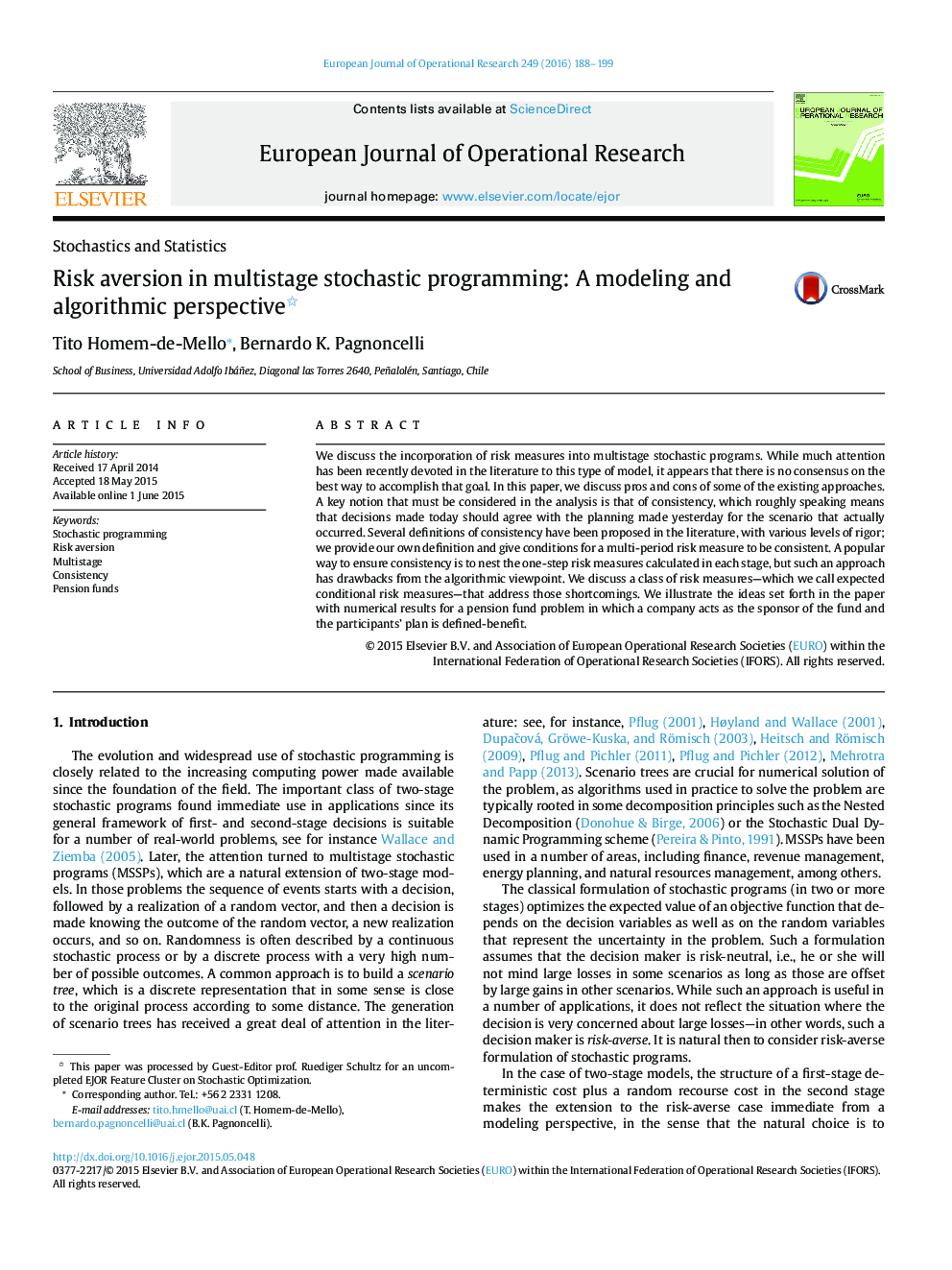| کد مقاله | کد نشریه | سال انتشار | مقاله انگلیسی | نسخه تمام متن |
|---|---|---|---|---|
| 479434 | 1445990 | 2016 | 12 صفحه PDF | دانلود رایگان |
• We discuss alternatives to incorporate risk into a multistage stochastic program.
• We propose a new definition of (time)-consistency.
• We illustrate the pitfalls of some measures of risk used in practice.
• We study a new class of multi-period risk measures.
• We apply the proposed multi-period risk measure to a pension fund problem.
We discuss the incorporation of risk measures into multistage stochastic programs. While much attention has been recently devoted in the literature to this type of model, it appears that there is no consensus on the best way to accomplish that goal. In this paper, we discuss pros and cons of some of the existing approaches. A key notion that must be considered in the analysis is that of consistency, which roughly speaking means that decisions made today should agree with the planning made yesterday for the scenario that actually occurred. Several definitions of consistency have been proposed in the literature, with various levels of rigor; we provide our own definition and give conditions for a multi-period risk measure to be consistent. A popular way to ensure consistency is to nest the one-step risk measures calculated in each stage, but such an approach has drawbacks from the algorithmic viewpoint. We discuss a class of risk measures—which we call expected conditional risk measures—that address those shortcomings. We illustrate the ideas set forth in the paper with numerical results for a pension fund problem in which a company acts as the sponsor of the fund and the participants’ plan is defined-benefit.
Journal: European Journal of Operational Research - Volume 249, Issue 1, 16 February 2016, Pages 188–199
